John Warmuth Saloon (Roslyn House)
69 Roslyn Road, Roslyn Heights
Project Files
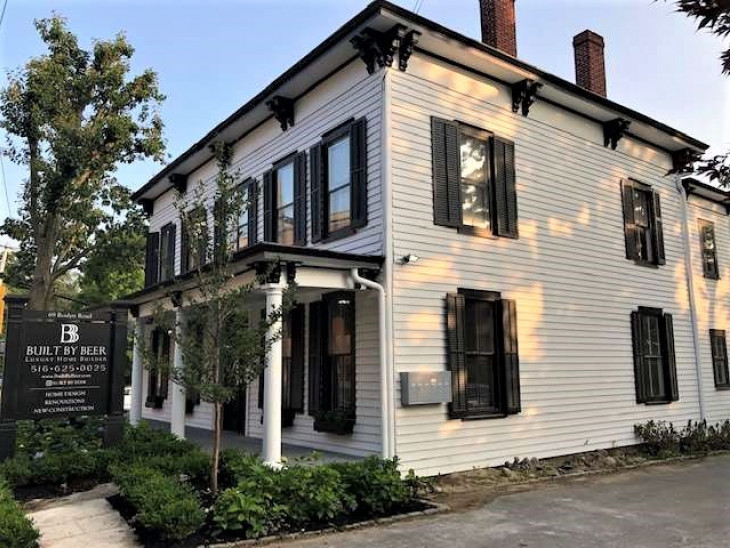
The Walling Map of 1859 shows the land at the northwest corner of Lincoln Avenue and what is now Roslyn Road as belonging to "Field and Eastman." There were no buildings standing on the site. The Beers-Comstock Map (1873) shows the corner belonging to Henry Western Eastman, who owned most of the land in the vicinity, and indicates there was a building standing on the site. The Belcher-Hyde Map of 1906 identifies the building as "The Roslyn House" and indicates that it belonged to Matilda Brown, formerly Matilda A. Warmuth. On May 1st, 1856, Henry Western Eastman bought a one-half interest in a 41-acre farm, which included this site, from Furman Field, M.D. (Queens County Liber of Deeds, #141, Pages 280-283). This transaction was recorded on the following day. The Eastman holdings were surveyed by N. Sprague in July, 1867. The Nassau County Museum Library has on file the properties surveyed by N. Sprague but, unfortunately, does not have the surveys of properties north of Lincoln Avenue. In any event, after 1859, but prior to 1873, Henry Eastman acquired title to the entire holding.
On April 27, 1882, John H. Warmuth, of Roslyn, bought the property from the estate of Henry Western Eastman (Queens County Liber of Deeds, #594, Pages 209-212). However, John armuth probably had a tenant connection to the property before he actually owned it, as the "Roslyn Directory" for 1878-1879 includes the entry "John Warmuth—liquors," Page 476. In addition, John J. Radigan's unpublished "History of St. Mary's Church, Roslyn" (1943) identifies John Warmouth (sic) as a "property owner," in the list of "Catholic Families around the Depot at Round Hill, 1873." Radigan also described him as a Catholic hotel owner prior to 1873. On October 11th, 1880, Frederic M. Eastman, executor of the estate of John H. Warmuth, sold the property to John H. Rice of Manhasset (Queens County Liber of Deeds, #690, Pages 397-399). We are unable to identify John Rice. However, on June 7th, 1889, John H. Rice sold the property to Matilda Warmuth (Queens County Liber of Deeds, #701, Page 59), who later became the Matilda Brown, owner of "The Roslyn House," shown in the 1906 edition of the Belcher-Hyde Atlas.
On June 4th, 1907, Matilda Brown (formerly Warmuth), of Manhasset, sold the property to Cornelius J. O'Leary, of Roslyn (Nassau County Liber of Deeds, (volume unknown), Pages 152-153). On December 6th, 1910, Cornelius J. O'Leary sold the property to Patrick Breen, subject to a lease of the premises to Wesley Francis, dated September 29th, 1909, and expiring October 1st, 1912 (Nassau County Liber of Deeds, #248, Page 319).
Not very much is known about John Warmuth of Roslyn, except that he operated a saloon and small hotel at the intersection of the Roslyn-Mineola Road and Lincoln Avenue. There are several Warmuths living in the vicinity of Farmingdale who are related to each other but who are not, so far as they know, descended from John Warmuth of Roslyn. Their family originally immigrated from Germany, and John Warmuth, or his parents, probably did so, also. As mentioned above, ohn Warmuth was a Catholic and a landowner who lived on "Round Hill" in the vicinity of the Rail Road Station. John Radigan's "History of St. Mary's Church" also mentions that John Warmuth was one of the parishioners upon whom Father William O'Donnell visited after he was called to Roslyn in June, 1871. "Round Hill," the area around the Rail Road Station, was "developed" shortly after the Civil War, following the arrival of the railroad in 1865. Most of the residents were Irish immigrants, who helped found St. Mary's at about that time. It is not known whether "The Roslyn House" was built by Henry Western Eastman or John Warmuth. Henry Eastman certainly owned the property at the time it was built, ca. 1870, and continued to own it until his death in 1882.
It is conjectured that John Warmuth operated "The Roslyn House" as a tenant before he bought it from Henry Eastman's estate, as the Roslyn Directory lists him as being in the liquor business in 1878. The previous directory (1867-68) does not list him at all. Actually, given the construction financing practices of the 19th century, it is conceivable that he built "The Roslyn House" on land belonging to Henry Western Eastman. In any case, if he was the first tenant in the building he probably, as the prospective occupant, would have had a good deal to do with the design even if Henry Eastman paid the construction costs.
Perhaps even more interesting is why "The Roslyn House" was built so far away from the Rail Road Station and the center of Round Hill. Probably Warmuth, or Eastman, wished to have the building a distance from the possible rowdyism of the center of Round Hill. In addition, "The Roslyn House" occupies a highly visible position on a high curve of the Roslyn-Mineola Road and overnight guests probably were accommodated. There were accommodations for "drummers" (travelling salesmen) to spend the night and display their wares.
The history of Cornelius James O'Leary is far more complete as one of his seven children, Catherine Elizabeth Cecilia O'Leary, survives and was interviewed by one of the authors (RGG) on December 2nd, 1983. Miss O'Leary actually was born in "The Roslyn House" and lived there until she was three years old. Since Miss O'Leary was born in 1905, and her father did not buy "The Roslyn House" until 1907, it is obvious that he rented the premises for at least two years before he acquired title. In any event, Catherine O'Leary recalls that her father operated a saloon in "The Roslyn House." In 1908, Cornelius O'Leary bought the premises immediately to the north, #61 Roslyn Road, so that he could operate there as a road construction contractor, using the large north sideyard for the storage of dump carts, and where he would be able to make use of the large barn. Miss O'Leary and her sister still reside in the house at #61 Roslyn Road. Miss Catherine O'Leary was a teacher in the Roslyn School System for many years, as were several other members of the O'Leary family. Additional comments concerning the O'Leary period of ownership will follow in appropriate places in the text.
Patrick Breen bought "The Roslyn House" on December 6th, 1910, and continued to operate the saloon there, as well as a small hotel called the Edgewood House. He had experience in this type of business as he previously had owned a bar and hotel at Bull's Head (Greenvale). However, the Breens had six children and most of the premises, apart from the bar-room, were used as a family residence.
On April 21st, 1919, Rose Veronica Breen, Patrick's daughter, and Adam Tucholski held their wedding reception in the saloon bar of "The Roslyn House." Mr. Tucholski has very kindly supplied much of the data covering the Breen family ownership.
With the adoption of the 18th Amendment (Prohibition), on January 16, 1920, the Breens gave up keeping a saloon and opened a confectionery and ice cream parlor in the saloon's bar.
Subsequently, during the Breen ownership, in the late 1930's and early 1940's, Roy Davis operated a luncheonette in the building. Upon Patrick Breen's death, in 1947, the building was sold to Charles Caserta, of Manhasset, who made a number of changes to both the interior and the exterior. Mr. Caserta did not operate a business in the building, but rented space to tenants.
For the most part, but not always, the second floor was rented to residential tenants, whom Mr. Caserta described as "pleasant, but destructive," and to various commercial activities on the street floor. These included a dress shop, an employment agency, and a dancing school. The two final ground floor tenants during the Caserta ownership were the Ebony Maid Beauty Salon, on the north side of the building, and The Assembly of Prayer Baptist Church, on the south side. On June 26th, 1974, the building was bought by the Town of North Hempstead Community Development Agency from Charles Caserta. Both street floor tenants remained in the building. In 1976, The Assembly of Prayer Baptist Church moved into a brick building which faces Lincoln Avenue directly to the west.
Their premises were taken over by the Traditional (Jewish) Congregation of Roslyn. Both the Traditional Congregation of Roslyn and The Ebony Maid remained in the building until 1979, when the Community Development Agency stopped renting the premises. It remained empty and in derelict condition until October 20th, 1983, when it was bought by The Roslyn Preservation Corporation, a not-for-profit corporation which is deeply committed to the restoration of derelict buildings in and around Roslyn. In implementing this sale, the North Hempstead Community Development Agency set a price for the sale of the building and published basic standards for the building's restoration. The Agency then accepted proposals describing the restoration and future use of the building. There were 13 competitors for its purchase. Apparently The Roslyn Preservation Corporation presented the best restoration plan and preservation covenants, and the building was sold to that group.
During the period from October 20th, 1983 to December 13th, 1984, the Preservation Corporation completed the restoration of the building as it appears today. Actually, because of the cooperation of the Community Development Agency, access to the building was authorized prior to its purchase, and John Stevens was able to evaluate the structure and prepare the plans for its restoration by the time the building was actually conveyed to The Roslyn Preservation Corporation. On December 13th, 1984 the building was sold to Barry Wolf, President of the Audited Advertising Distributors, for use as his firm's offices.
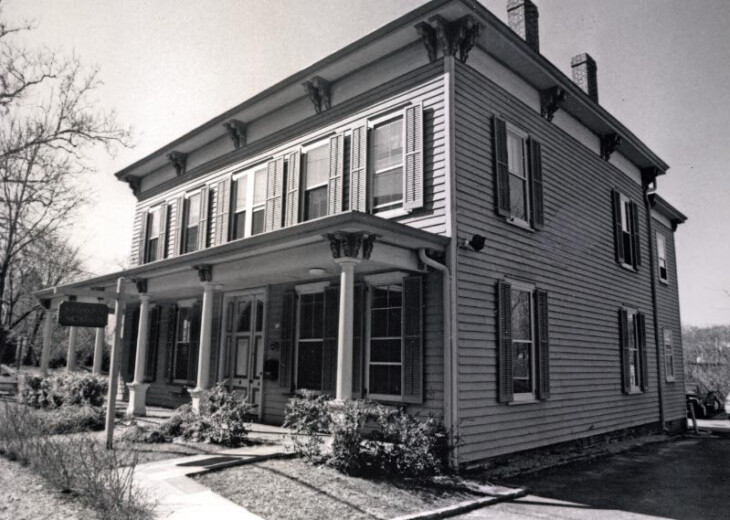
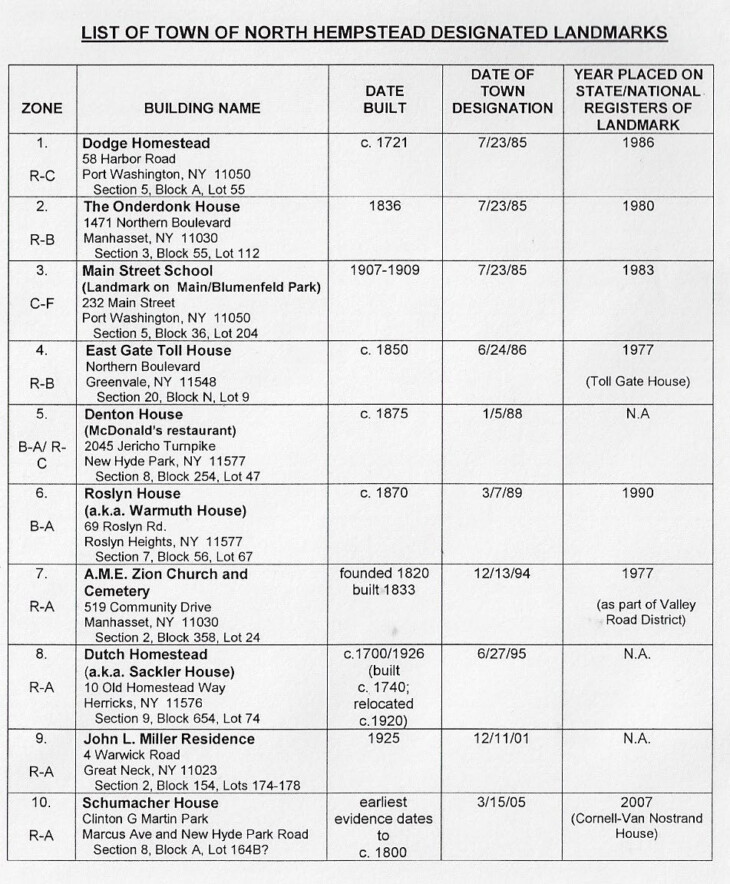
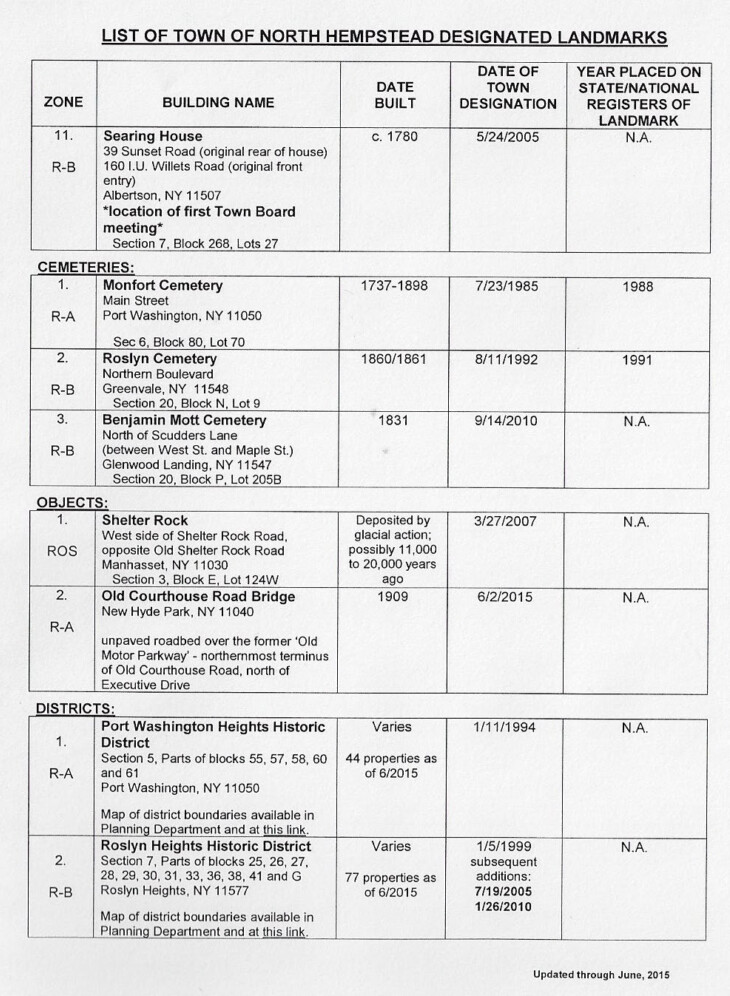
Town of North Hempstead Landmarks
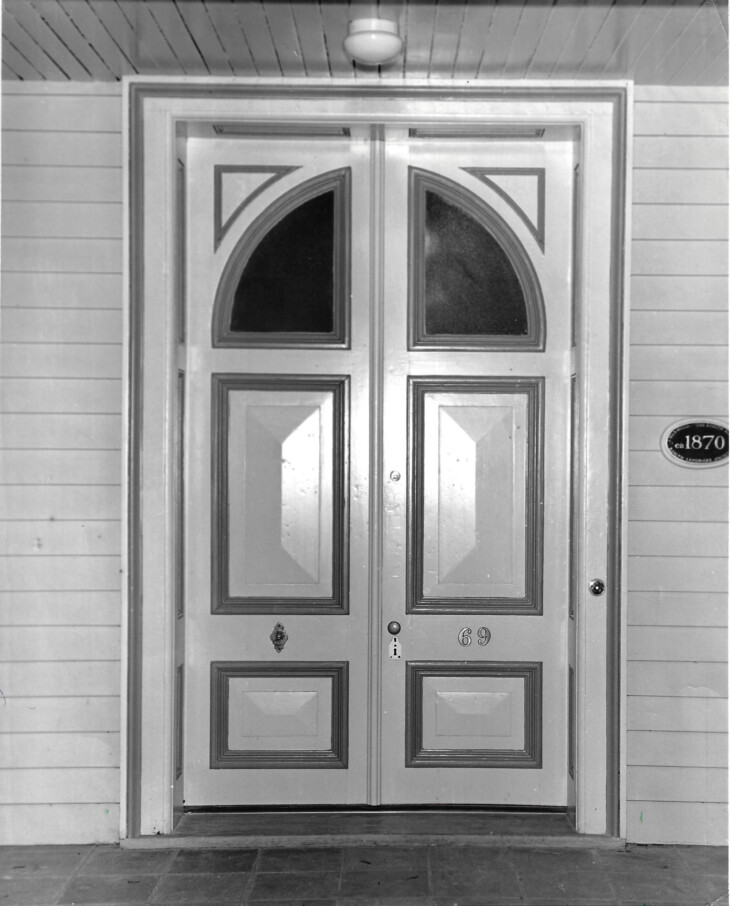
The door on the Roslyn House installed in 1984. The caption indicates the door came from St. Mary's Chapel (1867). Sadly, the door was recently replaced.
Photo caption:
John Warmuth “the Roslyn House” ca. 1870
(Henry Eastman Tenant Bldg)
Principal (East) Doorway after restoration
(12/15/84). Doorway probably came from
another bldg.; most likely St. Mary’s Chapel
(1867) which was moved behind bldg in 1872 &
Converted to a home. Glass quadrant, originally
were wood panels. Glass was probably installed
when doorway was installed in this bldg to
provide some daylight to center hall.
Porcelain keyhole escutcheon is original.
doorbell plate made to fit “paint-______?
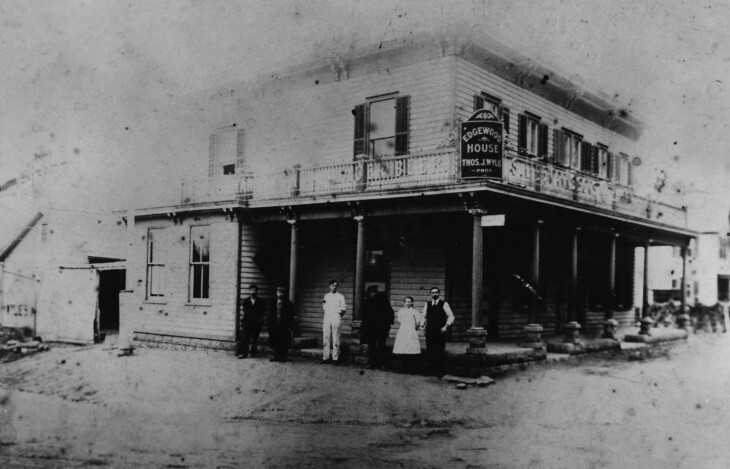
The Roslyn House (circa 1915). 15-year old Rose Breen, the owner's daughter, can be seen second from the right.
0 Comments